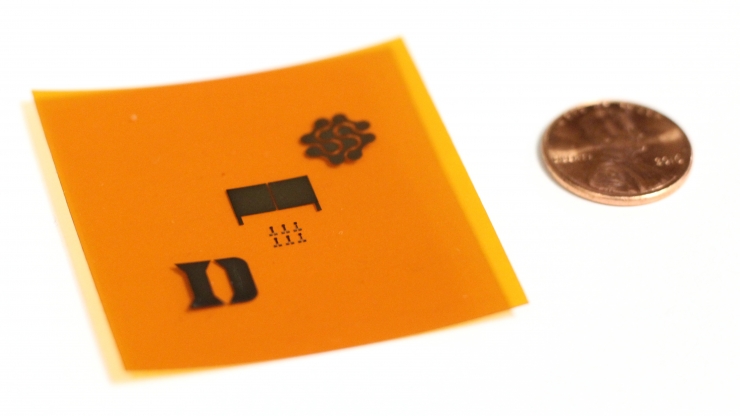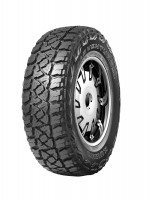Duke University engineers develop printed tyre tread wear sensor
 A demonstration of the printed carbon nanotubes on a flexible surface. The prototype tire tread sensor (middle) is flanked by the logos of Duke University and Fetch Automotive Design Group.
A demonstration of the printed carbon nanotubes on a flexible surface. The prototype tire tread sensor (middle) is flanked by the logos of Duke University and Fetch Automotive Design Group.
Duke University electrical engineers have developed a printed sensor that can monitor the tread of car tyres in real time. The group thinks that the tyre wear sensor could disrupt the $2 billion tyre and wheel control sensor market.
In collaboration with Fetch Automotive Design Group, the Duke researchers have demonstrated a design using metallic carbon nanotubes (tiny cylinders of carbon atoms just one-billionth of a metre in diameter) that can track millimetre-scale changes in tread depth with 99 per cent accuracy. The design has two patents pending.
“With all of the technology and sensors that are in today’s cars, it’s kind of crazy to think that there’s almost no data being gathered from the only part of the vehicle that is actually touching the road,” said Aaron Franklin, associate professor of electrical and computer engineering at Duke. “Our tyre tread sensor is the perfect marriage between high-end technology and a simple solution.”
A paper published on 9 June in IEEE Sensors Journal outlines the design under the title: “Noninvasive Material Thickness Detection by Aerosol Jet Printed Sensors Enhanced Through Metallic Carbon Nanotube Ink”.
According to the Duke University reports, the core of the sensor is formed by placing two small, electrically conductive electrodes very close to each other. By applying an oscillating electrical voltage to one and grounding the other, an electric field forms between the electrodes.
While most of this electric field passes directly between the two electrodes, some of the field arcs between them. When a material is placed on top of the electrodes, it interferes with this so-called “fringing field.” By measuring this interference through the electrical response of the grounded electrode, it is possible to determine the thickness of the material covering the sensor.
Tests also proved that the metal mesh embedded within tyres does not disrupt the operation of the new sensors.
The sensors can be printed on almost anything using an aerosol jet printer — even on the inside of the tyres themselves. And, while it is not yet certain that direct printing will be the best manufacturing approach, whatever approach is ultimately used, Franklin said the sensors should cost far less than a penny apiece once they’re being made in quantity.
Franklin’s group also wants to explore other automotive applications for the printed sensors, such as keeping tabs on the thickness of brake pads or the air pressure within tyres. This is consistent with a key trend in the automotive sector toward using embedded nanosensors.

An illustration of how the novel tread sensor works. The sensor is placed on the inside of the tire, where the tire wall and tread interferes with an electric field that arcs between two electrodes. That interference can be measured to determine the thickness of the rubber with millimetre accuracy.




Comments